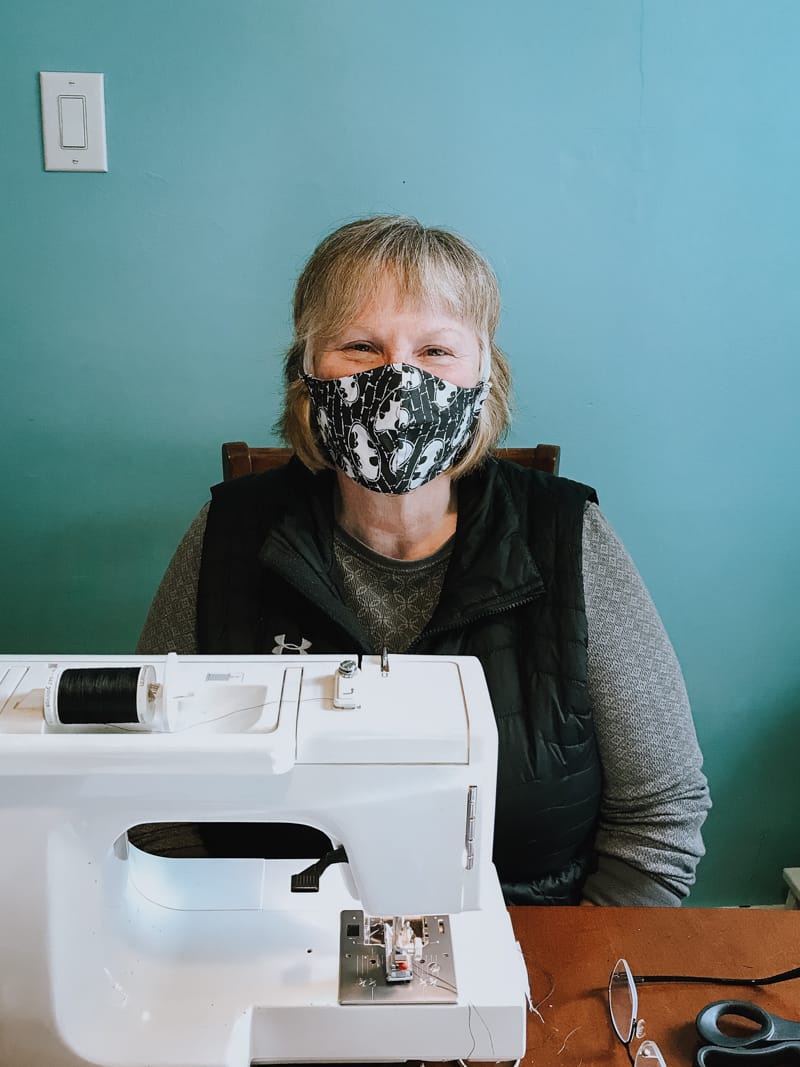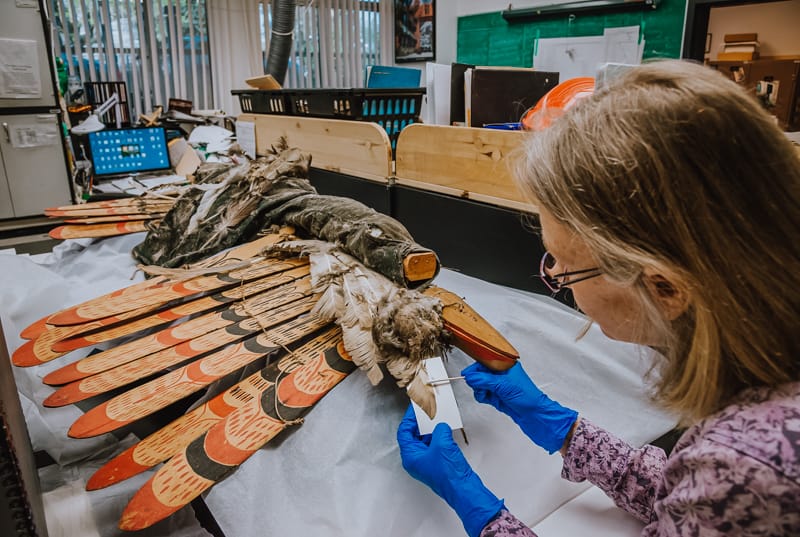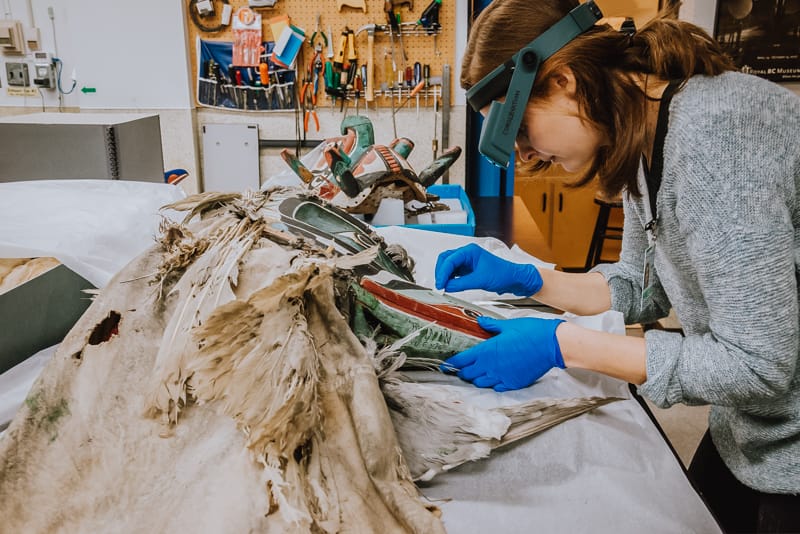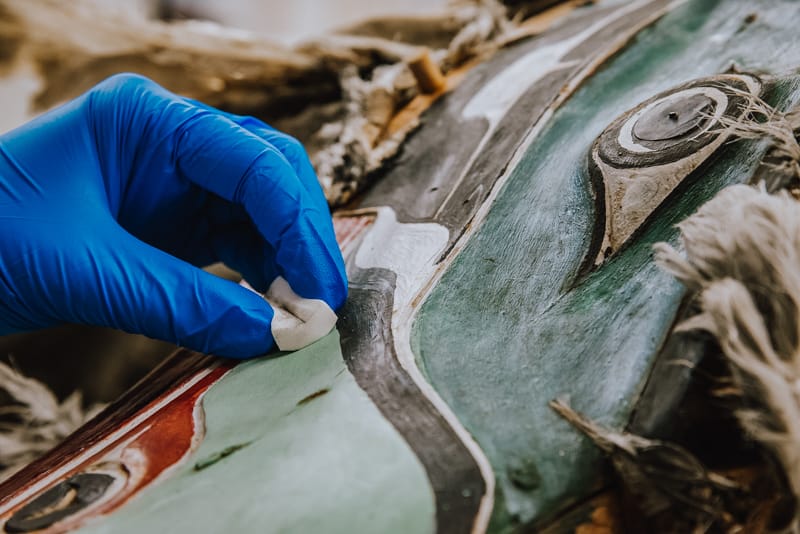
Modernization
Learn more about government’s intention to modernize the museum to protect our historic holdings and provide better access to our collections.

These days, when Kasey Lee isn’t leading conservation activities at the Royal BC Museum, she’s busy making personal protective equipment (PPE)—specifically, cloth masks—for friends, family and local seniors.
 Lee and her kids have sewn and gifted dozens of non-medical masks since British Columbia went into lockdown in early March. A long-time conservator, she knows first-hand the value of PPE: “It’s a regular part of what we do here at the museum and archives.”
Lee and her kids have sewn and gifted dozens of non-medical masks since British Columbia went into lockdown in early March. A long-time conservator, she knows first-hand the value of PPE: “It’s a regular part of what we do here at the museum and archives.”
Each of the Royal BC Museum’s five conservators are “taught to think first about health and safety,” says Lee. “We all have access to lab coats, aprons, safety goggles, steel-toed boots and Tyvek suits. And everyone has to have their own custom-fit respirator—protection against noxious gases, molds and other chemical hazards.”
As Lee explains, “conservators get much deeper and closer than anyone else does to the collections. If the curators and archivists are the intellectual custodians of the collections, the conservators and collection managers are the physical custodians. It’s our job to know how they are made and how they deteriorate, sometimes to a microscopic level.”

Before being added to a collection, each potential artifact is carefully inspected with tools such as UV lights, X-rays and Geiger counters “to make sure it’s safe for us to handle and safe for the public to access,” says Lee.
The old medicine bottles in Dr. John Helmcken’s medical chest, for example, once contained “potentially deadly” compounds and acids. A huge taxidermied grizzly bear “loaded with arsenic” required careful handling with “nitrile gloves, lab coats and N95 masks” before it could be safely displayed. And archival materials conservator Lauren Buttle “can spend days” removing dangerous mold from old books or documents before they are safe to be digitized.

“The conservation profession in Canada is only about 50 years old,” notes Lee, “and early pioneers didn’t always know what they were dealing with!” For example, Mad Hatter Syndrome was a neurological disorder once common among hat-makers who were exposed to the mercury they used to cure small animal pelts. “Now we have fume hoods, and HEPA vacuum filters and other protections, so that noxious chemicals aren’t being dispersed through the air and into our bodies.”
Beyond the health of the conservation team, PPE also safeguards BC’s history. “We use it to protect the collections, not just ourselves,” says Lee. “Nitrile gloves, for example, protect against the oils on our skin, which can be acidic and leave a 3D print on metal surfaces. The grease on our hands can also stain paper and textiles.”

Lee acknowledges that the current pandemic “is going to mean things are a little different when we get back to work inside the Museum and Archives. The way we do things and interact with each other and the collections may never be the same. PPE may play an even more important role in our work lives.”
In the meantime, with the museum temporarily closed to the public, it comforts her to think of her beloved collections—some of which have been on display for decades—"getting a welcome rest” from the “cumulative and irreversible effects” of light exposure.
“Even the hallway working lights are off. The artifacts seem so happy in the dark at the moment—nothing is fading, nothing is being vibrated. It’s hard on them always being on show. But in the end, there’s no point in keeping these collections if we can’t share them—we look forward to welcoming the public back soon!”
We miss you too! Follow us on social to stay up-to-date with our reopening news: @royalbcmuseum on Facebook, Instagram and Twitter.